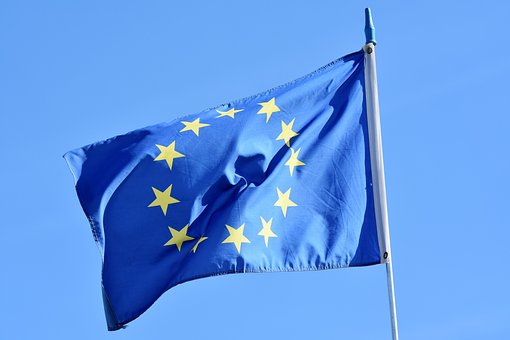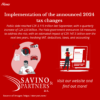Introduction to the Corporate Social Responsibility Directive
The Corporate Sustainability Reporting Directive (CSRD) illustrates the new non-financial requirements that large companies and listed SMEs will need to follow to disclose their data and impact in the field of sustainability. The new directive requires a broader set of large companies and listed SMEs, approximately 50,000 companies in total, to report on sustainability. This is an enormous increase from the previous legislation about non-financial reporting, the Non-Financial Reporting Directive (NFRD), which was compulsory just for 15,000 European firms. This new framework will ensure that investors and stakeholders have access to the information necessary regarding investment risks. It will also create transparency regarding the effect of companies on people and the environment while reducing reporting costs for companies over the medium to long term by harmonizing the information that needs to be provided. Companies will have to comply with specific European Sustainability Reporting Standards (ESRS), and the CSRD makes it mandatory for companies to audit the information reported on sustainability. The first set of standards should be adopted by mid-2023, based on draft standards published by EFRAG in November 2022, and the first companies will have to apply these new rules in the 2024 financial year for reports that will be published in 2025. Companies that will need to follow the CSRD, from the financial year of 20251, are the ones that met 2 out of these 3 requirements:
- Have more than 150 employees
- Have a turnover of 40 million EUR or over
- Have a balance sheet of 20 million or over
Furthermore, from the financial year of 20261, also listed SMEs will be required to follow this new directive. In addition, starting from the financial year of 20281, all the third-country firms which have a net turnover of over 150 million in the European Union and at least one branch or subsidiary in the EU will be included under this directive.
Within all the new characteristics of this non-financial and corporate sustainability reporting framework, it is important to underline the ones that make the CSRD a unique framework. In fact, worldwide there are present various non-financial disclosure standards, like the ones from TCFD and ISSB, however, they required firms to disclosure just the activities which are financially material, meanwhile, the CSRD introduced a new concept of double materiality, which we will discuss in the next chapter. Furthermore, other peculiarities of CSRD include the requirements of disclosure on the entire value chain2, the retrospective and forward-looking reporting perspective, the increased quality of information that required transparency, and third parties auditing.
Notes: 1)The reporting requirements applied from the year after the financial year of beginning; 2)This standard will start being into force after 3 years of the first disclosure reporting

The new way of reporting social and environmental factors: the double materiality
The concept of ‘double materiality’ is integrated into the Corporate Sustainability and Responsibility Disclosure (CSRD) framework and represents one of the key aspects of this new framework. Double Materiality involves reporting by companies not only on the financial risks related to sustainability issues (financial materiality) but also on their impact on people and the environment (impact materiality). For the first time, double materiality will introduce compulsory reporting of the analysis of the firm’s externality that impacts on the planet and people, even if they are not directly related to the financial situation of the company.
This recent implementation was introduced to respond to the current market changes and investors’ requests. In fact, investors are starting to look at both aspects due to the growing market for sustainable investment products and the increase of regulations such as the EU’s Sustainable Finance Disclosure Regulation. This also implied that clear disclosure and external certification can reduce the risk of ‘greenwashing’ and provide a transparent and objective account of a company’s impact on various issues while ensuring the reputation of the company and sustaining long-term value creation.
To illustrate the application of double materiality within every company, one example would be reporting on your energy consumption. Traditionally, the report will focus on the financial cost and its impact on your financial performance. However, with double materiality reporting, it will be required to expand the scope to include the impact of your energy consumption on the environment and society. This entails measuring the greenhouse gas (GHG) emissions across the value chain each year caused by energy usage, along with the contribution to resource usage, water pollution, and solid waste creation. However, this does not only represent a risk and challenge to the firm, as adopting a double materiality approach can provide useful insights when considering switching to renewable energy, as it enables reporting on the potential cost savings such a switch brings to the company, while also reporting on the improvements to the environment and reductions in GHG emissions that it brings globally. Overall, double materiality has numerous benefits for an organization once integrated and can be useful to promote the sustainable strategy that has been integrated inside the company and the status of the firm.

Why is important also for small and medium firms that are not directly affected by the CSRD
Not all the businesses operating within Europe will be affected by the CSRD, however, the new integrated approach of double materiality and the introduction of the firm’s accountability for the entire value chain might indirectly affect small and medium businesses that have large companies as clients. In fact, within the first 3 years of CSRD reporting obligation, large companies will need to start reporting about their emission throughout the entire value chain, therefore, they will start asking their supplier to provide data in regards to their emissions. Even if, in some cases, it will be just necessary to provide average business data, for other indicators like GHG emissions direct calculations will be necessary. Furthermore, as this new reporting discipline is growing is not excluded that new stricter requirements will be introduced in upcoming years.
This new legislation framework posed new risks and opportunities also to SMEs. In fact, the major risk for SMEs will be not having the necessary data that the clients will require, or once they have the required data, they might realize that their emission surpasses their expectations. In this case, additional investment will be needed to transform the business process in a sustainable way, in order to maintain the same relationship with the clients. On the other hand, these new disclosure requirements represent opportunities for some SMEs that decide to start driving through a sustainable path in advance and might acquire emission competitiveness once their clients or external costumers might start looking into their value-chain emissions.
No matter in which position the company is at this moment, the key to success in this changing market is to think long term, whether a company might need to start drafting strategies to decrease risks or take the most advantages from these green opportunities. Has your business strategy team ever considered these circumstances? Do you find difficulties navigating this new reporting standard and markets changing? Contact us for additional information.
Author: Elisa Barni
The Corporate Social Responsibility Directive (CSRD) and its effects on SMEs
Source: EU Commission
Source of images: https://pixabay.com/
Graphic Source: https://storyset.com/








